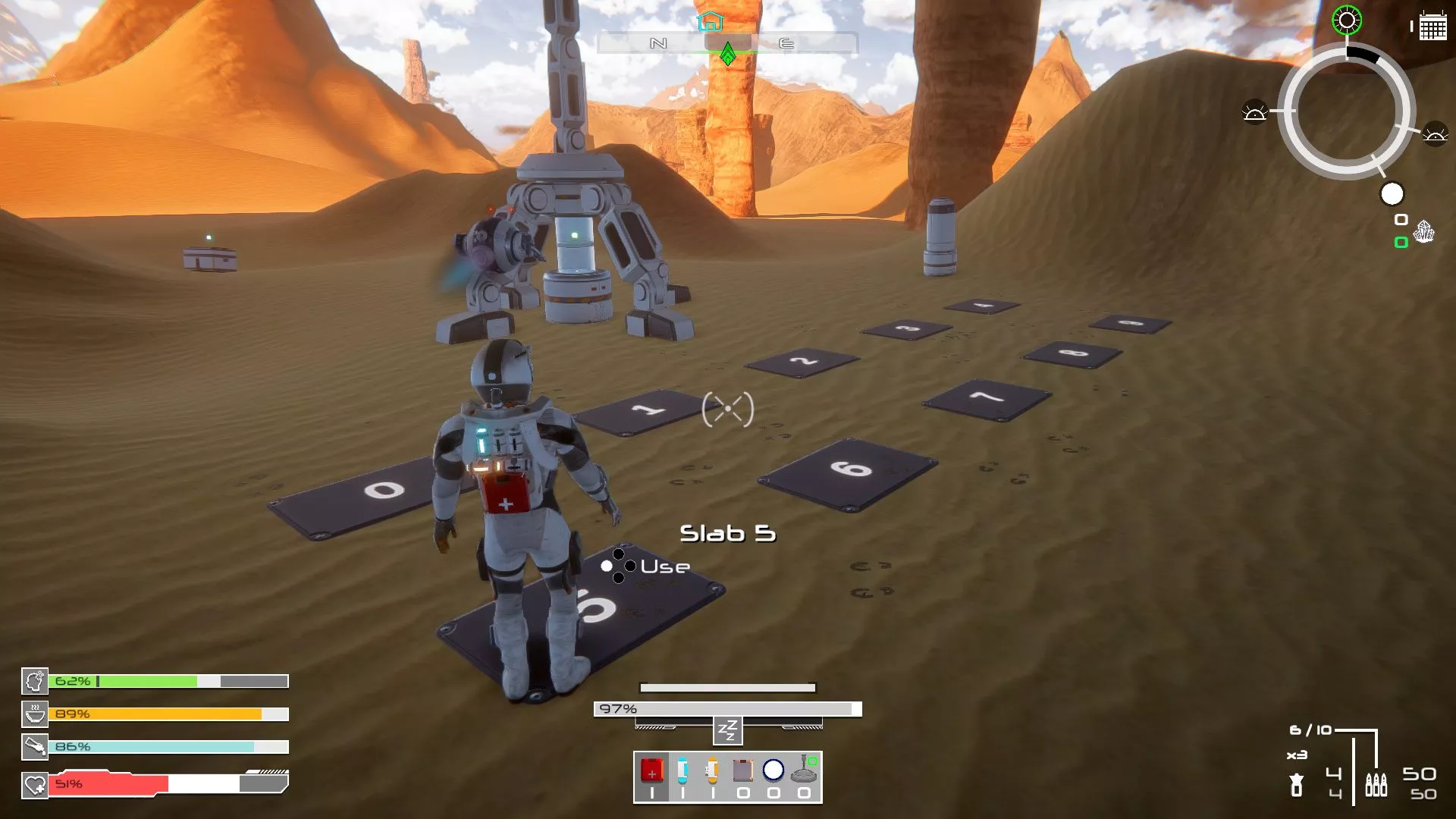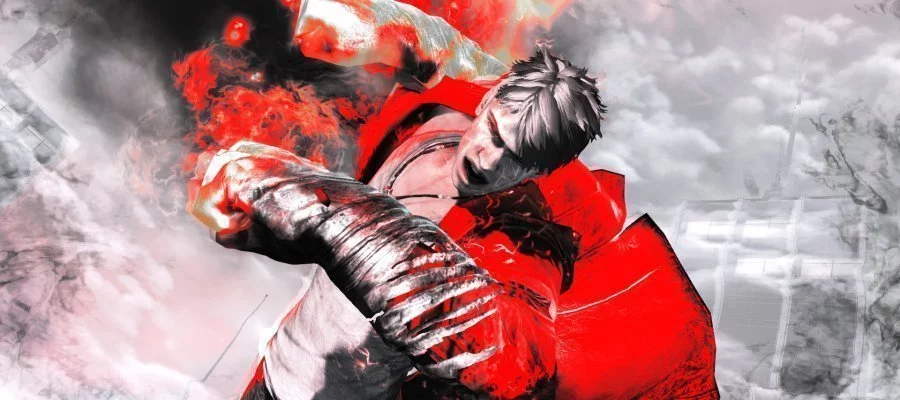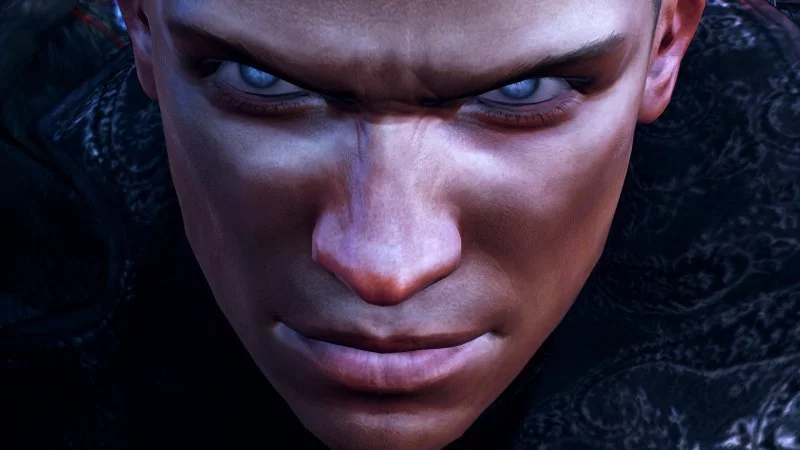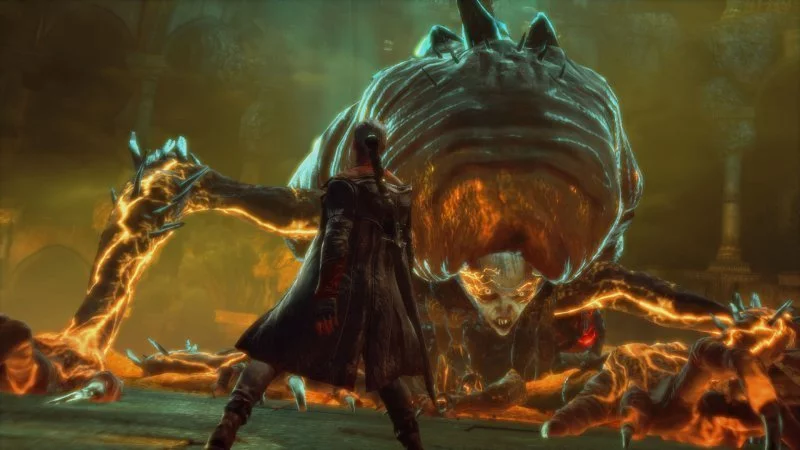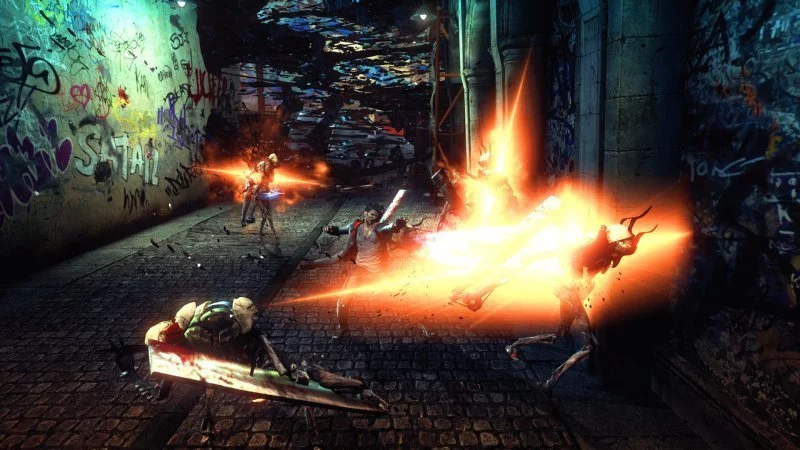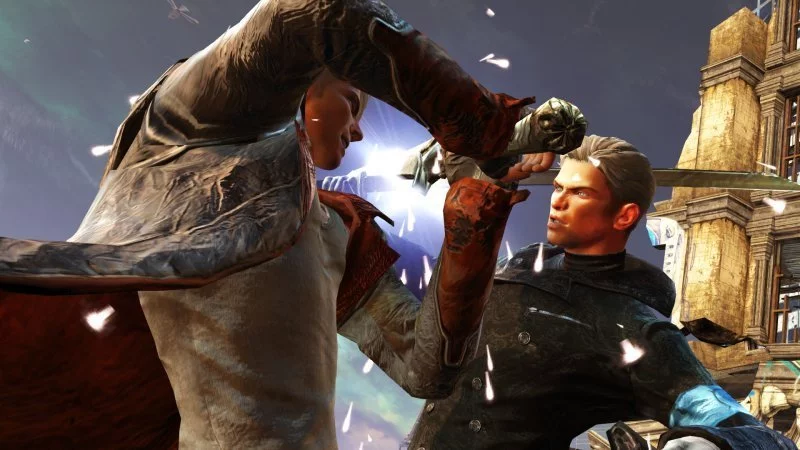The controversy over Capcom’s reboot of Devil May Cry is long done and dusted, but it might have chased fans away from the franchise. If nothing else, the release of DmC: Devil May Cry Definitive Edition gives those types — and others who missed out — a chance to play a great little game.
Ninja Theory has crafted a stylish, engaging, interesting and, most of all, fun Devil May Cry title. It’s true to the franchise and manages to pull off the tricky balancing act of keeping the spirit of the previous games intact while establishing its own identity. Both Ninja Theory and Capcom ought to be applauded for following through with this reboot, delivering it so superbly.
The game wastes no time in introducing its re-imagined Dante, new setting and the themes that come with it. This is by no means a simple coat of paint. It’s a total rebuild, but the foundations are classic Devil May Cry. This DmC isn’t a corny anime knock off. It isn’t built on tired Japanese clichés or mysterious (read: underdeveloped) characters alongside a nonsensical plot. It’s a swaggering, bombastic-style fiend; a foul-mouthed, cocksure asshole. It’s the guy you wish you were more like; confident and comfortable in his own skin. DmC knows who and what it is and makes no apologies for it. There’s no pandering to those so-called fans who were so vocally negative and no attempts to win over those who’d already decided they hated the game before playing it and DmC is all the better for it.
When we first meet Dante, he’s living the ultimate party boy, generation-Y slacker life. Parties, booze, streams of random women. It’s everything a 20 something half-demon/half-angel could want.
And there’s the first major divergence from the original series. Instead of being half-human, Dante is now half-angel — known as a Nephilim — although at first he is unaware of his lineage. While this change could have proved to make Dante a less relatable character — and despite not being human at all — his humanity remains, thankfully, intact. The character of Dante is one of DmC’s greatest strengths. Thanks to some decent writing and a great voice performance you’ll find yourself firmly in Dante’s corner, cheering him on all the way.
The voice acting and characterisations are brilliant across the board, but Dante isn’t the only character to have been recast. The Demon King Mundus is back in a big way, as is Virgil, but both characters are different than you may remember.
Mundus rules over the dual realms of Earth and Limbo, hiding in plain sight on Earth as a banker Kyle Rider. He controls the Earth and humanity through debt and subliminal mind control. Virgil takes on the role as leader of an Anonymous-style group known as The Order. They seek to open the world’s eyes to the demons who run it and remove Mundus from power. Oh and that subliminal mind control thing… they do that through an energy drink.
While Ninja Theory have injected some weighty themes and used current events as a backdrop to the story, overall the narrative is as bonkers as you’ve come to expect from DmC.
The narrative is certainly stronger and more well rounded that we’ve seen before in a Devil May Cry game, but if you’re playing DmC for the story, you’re doing it wrong. It’s all about the combat. The stylish, over-the-top, impossible combat. DmC delivers it in spades. It does start out gently, with just Dante’s trusty sword Rebellion and his pistols — Ebony and Ivory — to use against the hordes of enemies sent your way. Over time though you acquire an impressive arsenal of weapons, perfect for taking your enemies apart in style.
The game does a great job of arming you with new weapons fairly regularly. Just as you begin to master your current set of weaponry, something new and even more exciting is added and you start the learning process all over again.
At its most basic, combat is broken down into melee attacks, juggles and gun play. But hiding behind these three simple commands is a combat and combo system so deep you could drown in it. Dante’s Nephilism (?) comes into play here as you acquire both angelic and demonic weapons.
Angelic weapons are lighter and faster and more useful for juggling and doing smaller amounts of damage to more enemies. Demonic weapons, on the other hand, are total powerhouses used for smashing through enemy shields and doing big damage to a smaller number of enemies. Switching between Dante’s standard sword and the Angelic/Demonic weapons is a breeze. Simply hold down the left trigger to enter Angel mode or the right trigger for Demon mode. As you progress you’ll earn more than one weapon for each mode, but with the simple press of the D-Pad can switch between them. This switching is the core of combat in DmC.
Combining Rebellion with juggling, then switching to an Angelic weapon that draws all the enemies closer and finishing them off with a massive attack with a Demonic weapon is just scratching the surface of what the combat has to offer. While being in Angel or Demon mode and pressing the fire button Dante will send out a chain to the nearest enemy and pull himself toward them or pull the enemy to him respectively. This opens up all sorts of possibilities and creates the potential for the some the longest and most incredible combos yet. Combat becomes a rhythmic see-sawing exercise as you switch between weapons on the fly whilst zipping between enemies in the air and surgically taking them apart, all the while trying to earn that SSS combo rating. This is the fastest, most fluid and most stylish combat yet seen in the DMC series and while daunting at first, once you ‘get’ it everything falls into place and the fun doesn’t stop.
DmC is not flawless however and whilst the issues are minor and don’t tarnish the experience as a whole they are worthy of note. Throughout the game, you will come across multiple platforming sections. In theory they are a great idea, but in practice they fall short. Dante is fast and nimble but his jumping is designed for verticality and combat. Jumps are far too easy to mistime or misalign sending you back to try again. The idea is great but the execution is off. I’d be happy for more platforming in a sequel provided the mechanics are tweaked. The camera doesn’t help matters either. While it does its best to keep up with the action, often times it would get lost of stuck behind some scenery completely obscuring my view of the action. Worse still was during platforming sequences, occasionally an enemy would appear far away from me location and the camera would keep focussing on it rather than the direction I was heading, sending me plunging down a hole over and over.
I mentioned earlier that the story was engaging and it is, but it does suffer from some pacing issues. Especially towards the end. The story peters out and although the battle with Mundus is looming the overall drive has diminished. Most grating of all was Chapter 18. Every chapter before hand has pushed the story forward and was driven by combat and style and then you reach the penultimate level and it forces you to complete a slow paced, boring and simple puzzle. It ruins the breakneck pace the game had set and completely takes you out of the action. Mercifully, it’s fairly short.
The boss battles and overall difficulty are bones of contention too. Boss battles suffer from being overly simple affairs. Learn the pattern, hit the weak spot and kill the boss. They pose no real challenge and don’t represent the over-top-top and crazily difficult bosses of old. In fact the difficulty of the game in general is a little low. I’m by no means a DMC veteran but I played through on the hardest difficulty available and breezed through. That being said there are several other unlockable difficulties including the aptly titled Hell and Hell mode wherein Dante dies from a single hit. Yikes! So, while the difficulty is low at first, on the unlockable modes even purists will be challenged.
All in all DmC: Devil May Cry is a fantastically fun game. Fans may have been unhappy with the changed made to the setting and to Dante, but when it comes down to it the essence of Devil May Cry has been reverently preserved. The stylish and over-the-top action is still present as is the ridiculous story, albeit told in earnest this time around. The thumping soundtrack featuring Combichrist and Noisia is the perfect backing to the brutal hack and slash gameplay and once the combat clicks you’ll delight in the combos you’ll rack up.
Being the Definitive Edition, this version of DmC also comes with its “Vergil’s Downfall” DLC and a newly re-introduced Bloody Palace mode.
Taking place after the events of DmC: Devil May Cry — so, obviously, minor spoilers will be in this review, and major spoilers will slap you in the face if you play the DLC before you finish the base game – “Vergil’s Downfall” places the player in Vergil’s shoes as he recovers from the events that concluded the campaign. Vergil possesses the same skills and abilities in the DLC that he displays at the end of DmC, but of course, you’ll have to unlock some of those skills and weapons as you fight your way through the six chapters of the DLC.
At the beginning, Vergil’s a very different Nephilim than Dante; he’s slower in combat, and doesn’t offer a lot of variety when it comes to his initial attacks. While it’s a bit of a jolt as you’ll have to adjust your play-style accordingly, it does help to keep the beat-em-up nature of DmC fresh as you’re forced to explore different ways to make Vergil an efficient killing machine.
Eventually, Vergil will unlock a Devil and Angel version of his sword, Yamato… and, once you get those skills, it’s all over. Initially slow, the powered-up version of Vergil really becomes a force to be reckoned with. With each newly unlocked skill, you’ll feel that much more powerful, in a way I never felt when controlling Dante.
Story-wise, you can’t fault much with “Vergil’s Downfall”. In a campaign that runs for a good two or three hours, you’ll see how Ninja Theory have meticulously planned Vergil’s titular downfall, and it’ll leave you practically begging for DmC: Devil May Cry’s sequel.
For the most part, cutscenes have been replaced with slick animated sequences that have a style all to their own. While they very much fit the mental state in which Vergil finds himself in, my only complaint is that they were a bit hard to follow at first. For the longest time, I thought I was watching Vergil interact with Dante, when in fact he was communicating with his own shadow self.
On the whole, “Vergil’s Downfall” proved to be a great little add-on in the original DmC, and only furthers the quality experience of DmC: Definitive Edition. It’s hard to go wrong with it. The same applies to Bloody Palace, a Horde-type mode where you take on wave after wave of enemies using either brother.
Though we’ve nothing but great things to say of the game, one thing remains clear: it is essentially the same game you’ve played on last-gen. While Definitive Edition comes highly recommended for those who’ve not played it, only the hardcorest of fans should consider paying full retail price for more of the same. Sure, it’s in 1080p and 60fps, and comes with Turbo mode and three new difficulties, but we’re sure you’ll manage without. Or until a sale, at least.
Dante is dead. Long live Dante. Hell, Vergil too.
DmC: Devil May Cry Definitive Edition was reviewed using a promotional code on Xbox One and debug code on PS4, as provided by the distributor.
Review: DmC: Devil May Cry Definitive Edition
 |
|
The good
|
The bad
|
Want to know more about our scoring scale?
With additional content by Steve Wright.
This article may contain affiliate links, meaning we could earn a small commission if you click-through and make a purchase. Stevivor is an independent outlet and our journalism is in no way influenced by any advertiser or commercial initiative.





